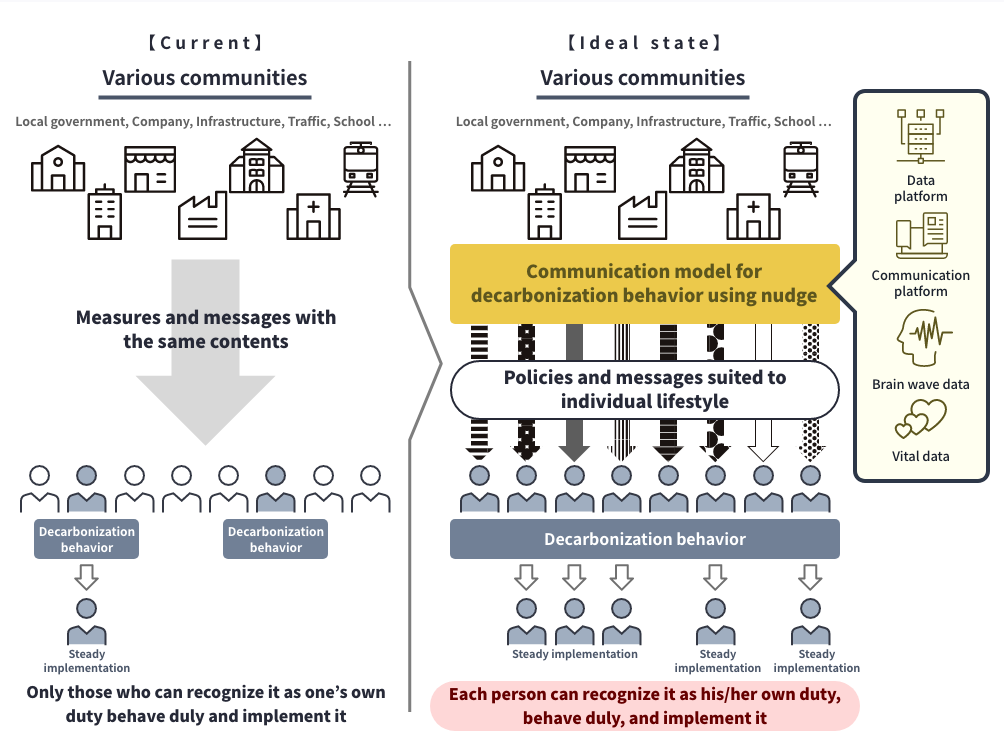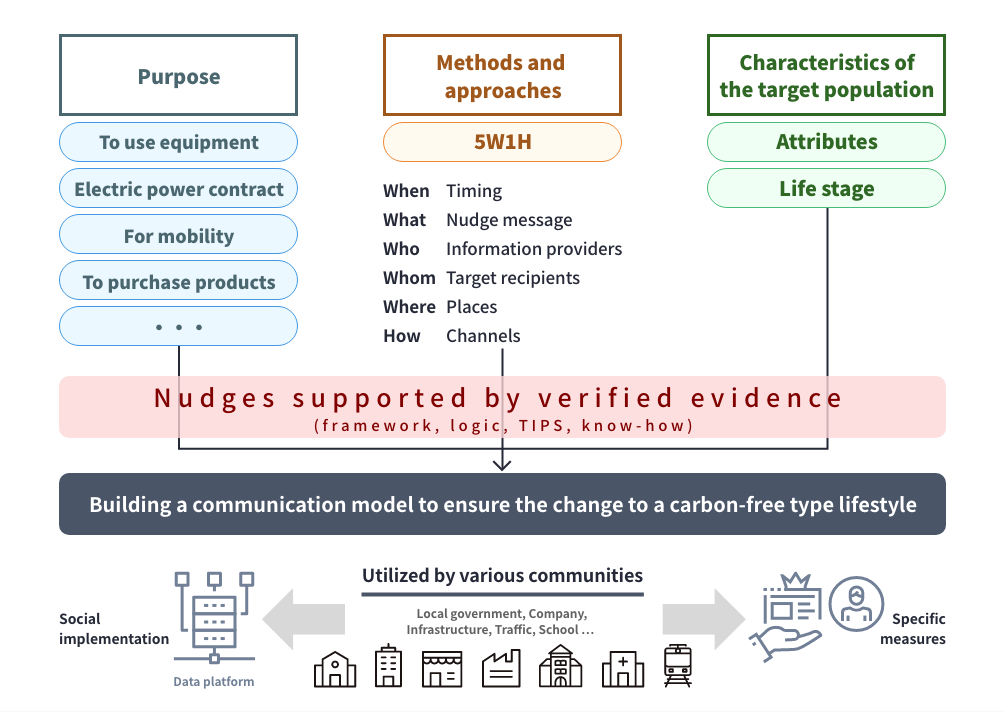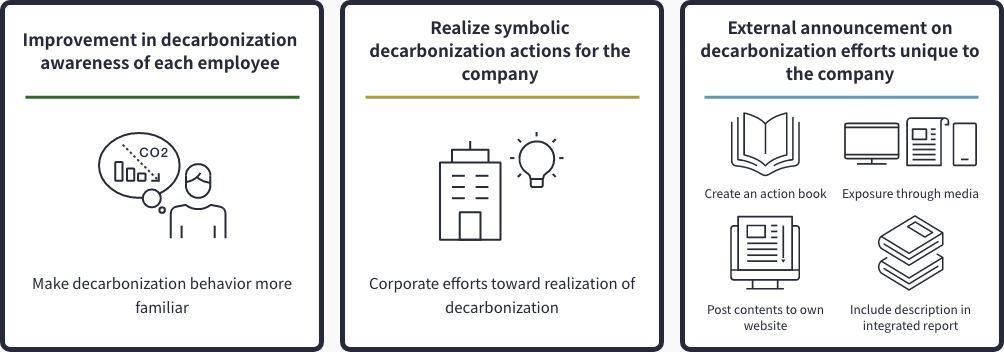dentsu carbon neutral solutions
Knowledge related to behavior change
toward carbon-free lifestyles using
Behavior Economics (‘nudge’ method)
What is the communication model that uses nudge to make decarbonization behavior deep-rooted?


Communication model to make decarbonization behavior deep rooted (image)
Communication model to ensure the transformation to a carbon-free lifestyle
Carbon-free type companies, products and services need to be chosen by consumers and customers to motivate companies to maintain efforts toward carbon neutrality and decarbonization. We can provide communication strategies to help transform consumer behaviors/mindsets to a focus on carbon-free that is easily retained and that becomes deep-rooted in the consumer psyche. We can also conduct analyses while using brain information technology and data on body vitals.
One of the keys to realizing a carbon-free society is to promote behavior transformation with a carbon-free focus in toC and toB communications, as well as ensure new behaviors become permanent. To aid this ‘behavior transformation via nudge’ process, the attributes and tastes of the target need to be known to ensure personalization and implementation, which we obtain via detailed analyses on the 5W1H (or When: in what sort of condition, at what timing, Where: at which place, Who: from what kind of actor, What: by what sort of appeal method, Why: why such a change occurred, and How: by what method) and by visualizing the associated emotions. These systemized items form a component of the communication model we constructed, the use of which could help expand the market for carbon-free type products and services, thus helping reduce CO2 emissions centered on the household segment.
Dentsu Group Inc. has also instigated other original and noteworthy solutions: (1) promotion of decarbonization behavior internally for employees; and (2) an application service developed for vitalizing internal communications in which decarbonization behavior is used as a trigger, for which demonstration experiments are ongoing within dentsu Japan. We are also focused on developing a service based on systematizing the outcomes of (1) and (2) above, with the aim of offering this to other companies to aid announcement of their unique efforts toward decarbonization.

Building an emotions-based model for lifestyles
To discover the mechanism of transformation to carbon-free type behaviors and implement such in society, as well as the nudge method, we need to make use of cutting-edge brain information technology and vital data. Various nudge logics exist, such as conformity, default, and using these we will perform a black-box analysis for the following: how they affect the human brain; what kinds of emotions react to them; and how specific actions result from them. While the purchase behavior model evolves over time, as we have seen with ‘AIDMA’ and ‘SIPS,’ emotional elements feature as important elements in the most well-known motivation theories (Maslow‘s Hierarchy of Needs, Herzberg’s Two-Factor Theory, McClelland‘s Theory of Motivation, etc.), such as motivation, satisfaction, dissatisfaction, pleasure, and expectations, because emotions are almost always involved in any decisions, as well as purchases. Emotions could be said to act as a bridge between motivation and action.
Given that decarbonization behavior is set as the main objective, we will uncover the following through visualization of emotions at the time of the motivation trigger: the kinds of emotions that lead to specific actions; and then, what kind of actions will follow.


